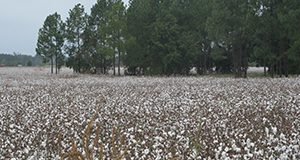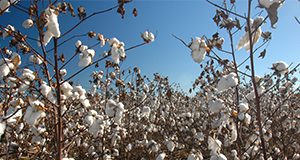This 8-page fact sheet written by Zane J. Grabau and published in January 2017 by the UF Department of Entomology and Nematology explains how to diagnose and manage nematode problems in cotton production.
http://edis.ifas.ufl.edu/ng015
Tag: Cotton Pest Management
Using Dicamba in Dicamba-Tolerant Crops
After many years in development, dicamba will likely be fully approved for use in tolerant cotton varieties for the 2017 growing season. There is great concern that dicamba drift can result in significant losses in nearby sensitive crops. This concern is well-founded because many crops (such as soybean, snap bean, and peanut) are highly sensitive to extremely low doses of dicamba. All precautions must be followed if these new dicamba formulations are to be used. This 3-page fact sheet discusses herbicide selection, discontinued use of ammonium sulfate, nozzle selection, boom height, and wind speed. It also addresses a few frequently asked questions. Written by J. Ferrell and R. Leon, and published by the UF Agronomy Department, February 2017.
http://edis.ifas.ufl.edu/ag414
Insect and Mite Integrated Pest Management in Florida Cotton
Insect and mite pests of cotton feed on cotton roots, leaves, stems, and fruit and reduce plant health and productivity, and, subsequently, cotton crop yields. These pests hide in different places on or within the plant or field, which makes them difficult to find and identify and costly to manage. The purpose of this 14-page guide written by Joseph Funderburk, Nicole Casuso, Norman Leppla, and Michael Donahoe and published by the Department of Entomology and Nematology is to provide Florida cotton growers a selected set of options for integrated pest management of insects and mites in cotton fields. It serves as a reference for cultural, mechanical, biological, and chemical control of arthropods. The guide includes links to additional UF/IFAS EDIS articles, as well as external sources of information on arthropod management. The guide also contains a searchable table of registered insecticides, herbicides, and fungicides for Florida cotton.
edis.ifas.ufl.edu/in1111
Diagnosing Herbicide Injury in Cotton (SSAGR358/AG367)
This 10-page fact sheet aids in the diagnosis of herbicide injury by providing pictures and descriptions of behavior in plants and symptoms associated with different herbicides organized by mode of action. Written by Sarah Berger and Jason Ferrell, and published by the UF Department of Agronomy, February 2012.
http://edis.ifas.ufl.edu/ag367
PI220 Florida Crop/Pest Management Profile: Cotton
PI220, an 8-page illustrated fact sheet by Mark A. Mossler, provides an overview of the management of cotton in Florida — production facts, regions, practices, insect/mite management, weed and plant growth regulators, disease and nematode management. Includes references. Published by the UF Department of Agronomy, October 2009.
http://edis.ifas.ufl.edu/PI220

